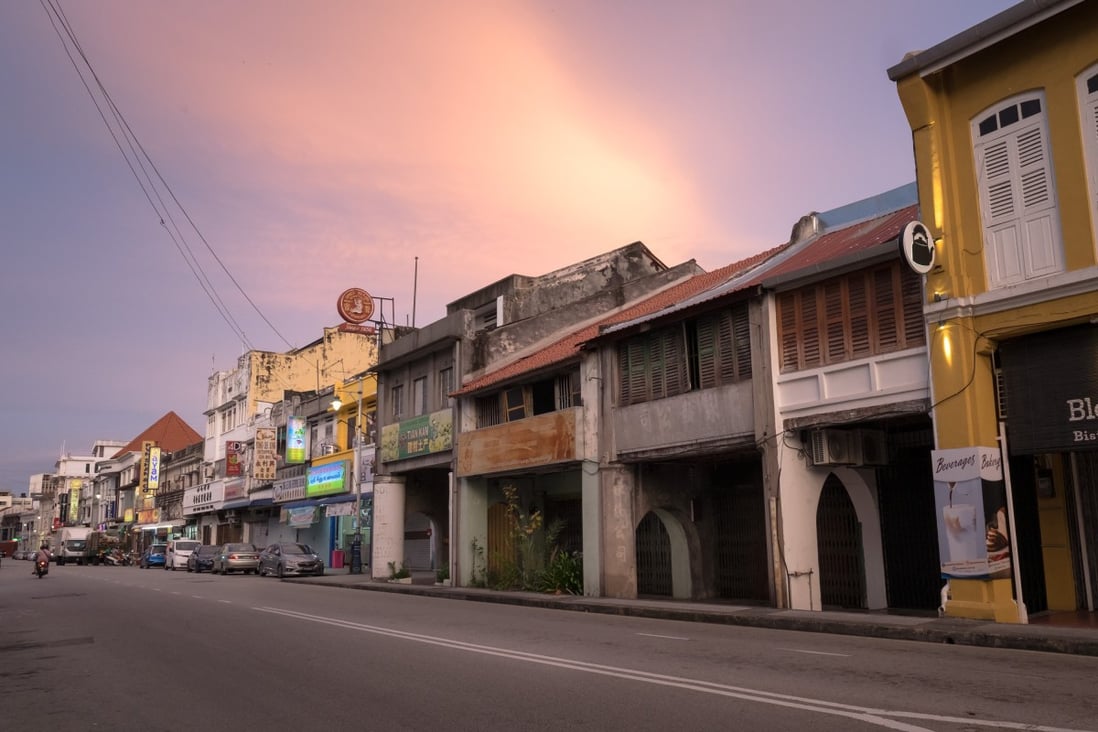- Joined
- Apr 14, 2011
- Messages
- 20,159
- Points
- 113
George Town is back to being a backwater – it’s as if Penang’s tourism boom never happened. Blame the coronavirus travel curbs

Marco Ferrarese
Published: 10:15am, 7 Mar, 2021

Closed shophouses in George Town, Penang, Malaysia. Strict coronavirus lockdown has left many businesses struggling to survive. Photo: Kit Yeng Chan
It has become a familiar scene on Chulia Street: Mamak Indian Muslim workers sweat behind face masks as they fill brown paper bags with rice and curry, feeding residents who would prefer not to – and indeed, until a month ago, could not – dine in restaurants.
Chinese uncles and aunties wait behind kerbside stalls for the next rider of a sputtering motorcycle, who will exchange a few ringgit for a plastic bag filled with hot soup and noodles. Behind them hang red Chinese altars covered in ritual ash next to rows of padlocked shophouses that, like closed eyes, seal George Town’s multicultural secrets behind metallic shutters.
Without visitors, George Town, the jewel in Malaysia’s tourism crown, has again become the sun-scorched colonial backwater it was before its inscription on the 2008 Unesco World Heritage list. Lockdowns of varying strictness have proved difficult for many residents, who were expecting 8.3 million tourists in 2020 before the Covid-19 pandemic thwarted hopes in Penang.
The island state was kept afloat for the best part of 2020, when infections across Malaysia barely surpassed 100 a day, by domestic tourists and a 75 million ringgit (US$18.4 million) relief package funded by the Penang state government that supported trishaw riders, taxi and e-hailing service drivers, and other low-paid workers.
- International borders have been shut for a year, and domestic travel to George Town, the jewel in Malaysia’s tourism crown, ground to a halt in January
- Still, a mural artist is busy adding new street art to the city’s walls, and optimists see the pause in tourism as a chance for Penang to reflect on its assets

Marco Ferrarese
Published: 10:15am, 7 Mar, 2021

Closed shophouses in George Town, Penang, Malaysia. Strict coronavirus lockdown has left many businesses struggling to survive. Photo: Kit Yeng Chan
It has become a familiar scene on Chulia Street: Mamak Indian Muslim workers sweat behind face masks as they fill brown paper bags with rice and curry, feeding residents who would prefer not to – and indeed, until a month ago, could not – dine in restaurants.
Chinese uncles and aunties wait behind kerbside stalls for the next rider of a sputtering motorcycle, who will exchange a few ringgit for a plastic bag filled with hot soup and noodles. Behind them hang red Chinese altars covered in ritual ash next to rows of padlocked shophouses that, like closed eyes, seal George Town’s multicultural secrets behind metallic shutters.
Without visitors, George Town, the jewel in Malaysia’s tourism crown, has again become the sun-scorched colonial backwater it was before its inscription on the 2008 Unesco World Heritage list. Lockdowns of varying strictness have proved difficult for many residents, who were expecting 8.3 million tourists in 2020 before the Covid-19 pandemic thwarted hopes in Penang.
The island state was kept afloat for the best part of 2020, when infections across Malaysia barely surpassed 100 a day, by domestic tourists and a 75 million ringgit (US$18.4 million) relief package funded by the Penang state government that supported trishaw riders, taxi and e-hailing service drivers, and other low-paid workers.


